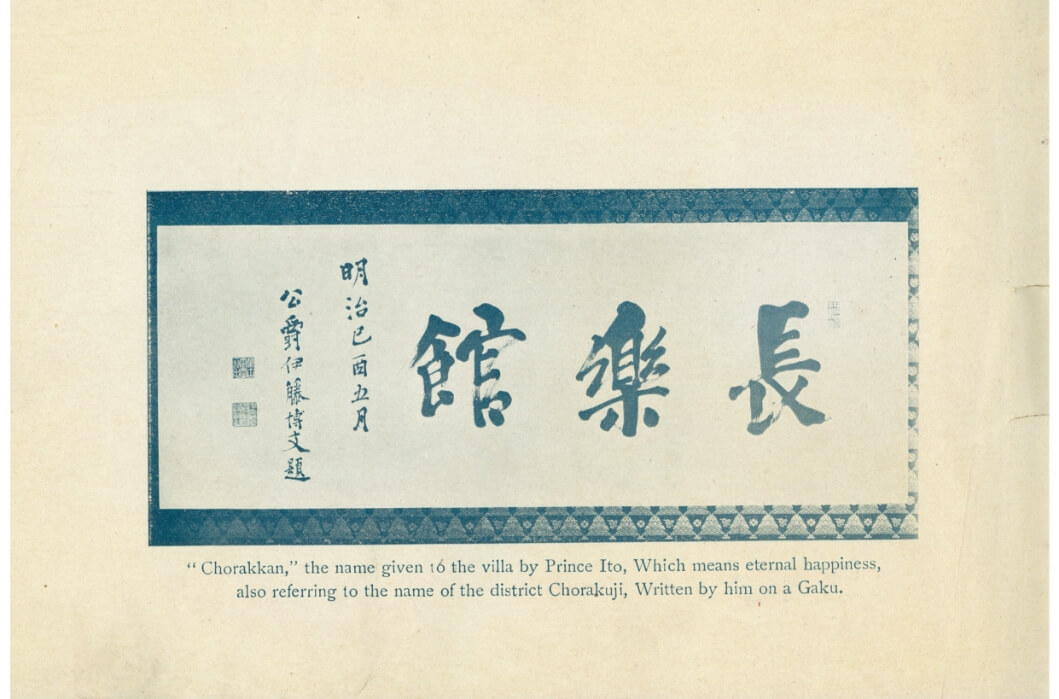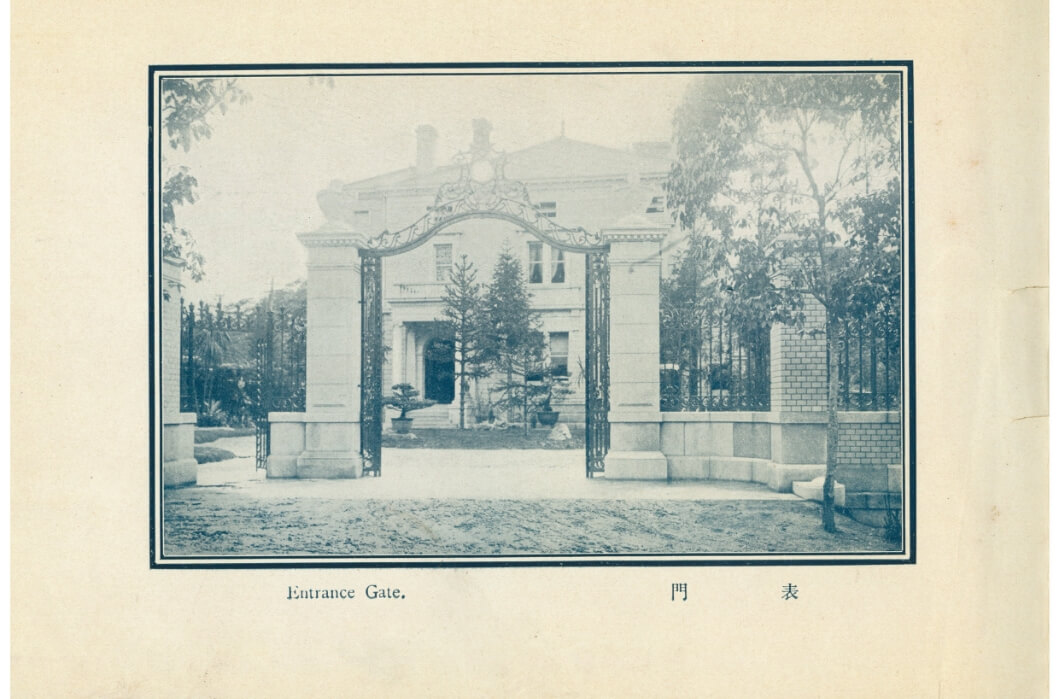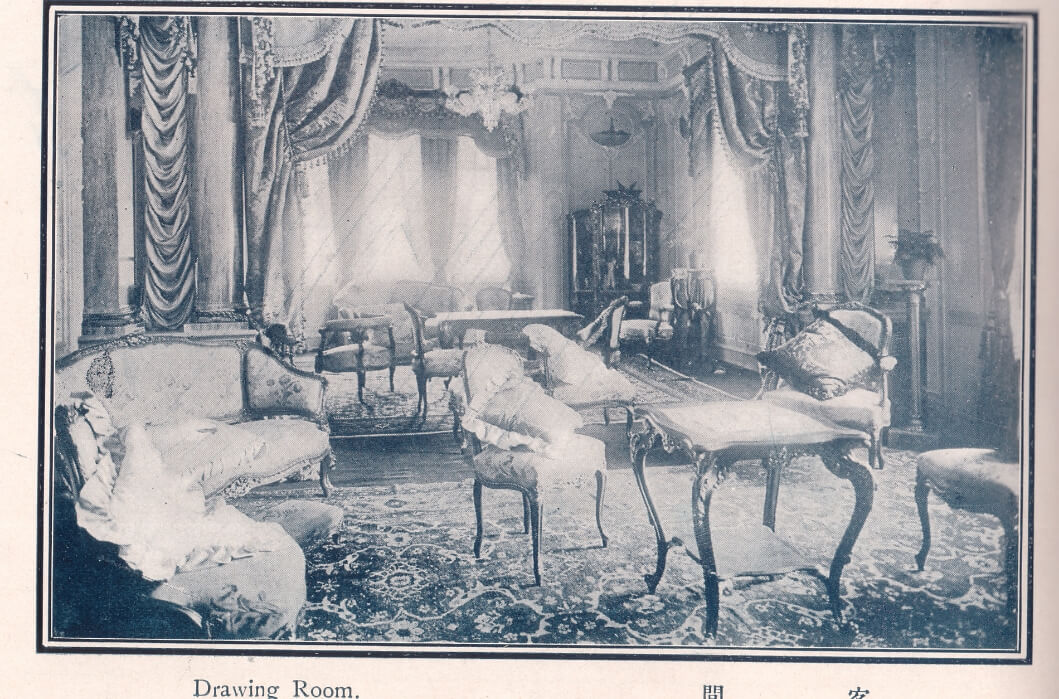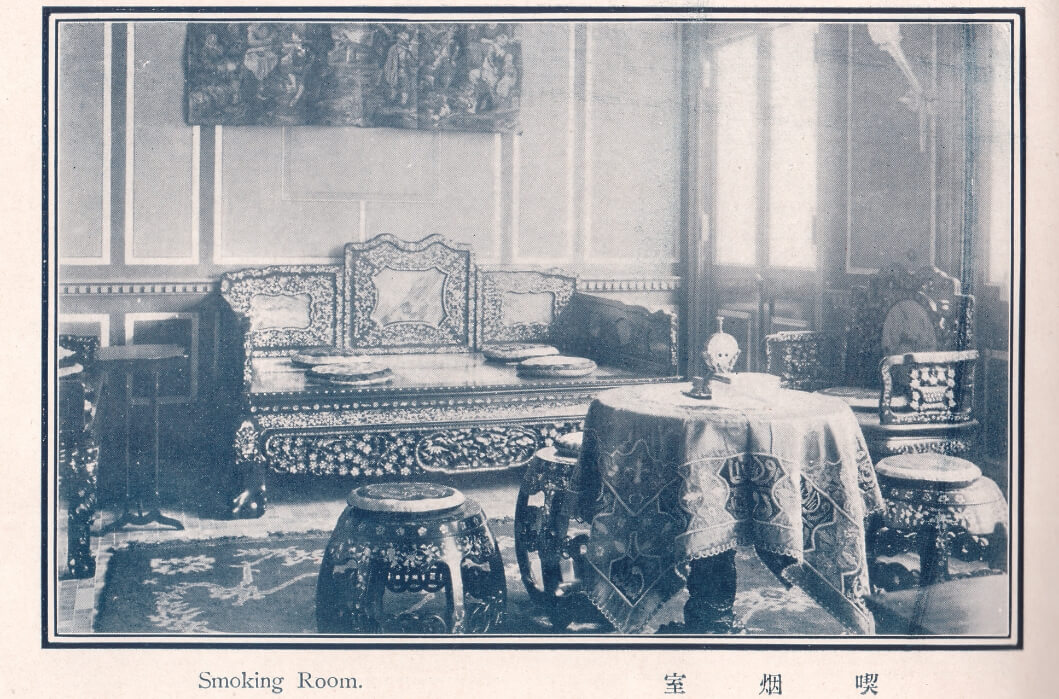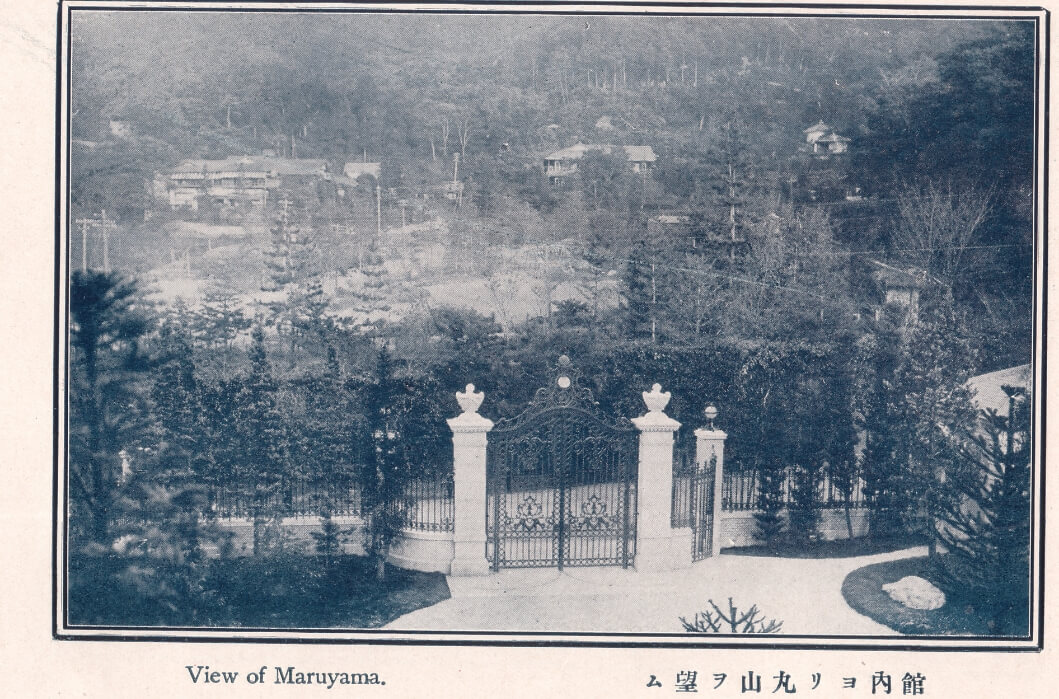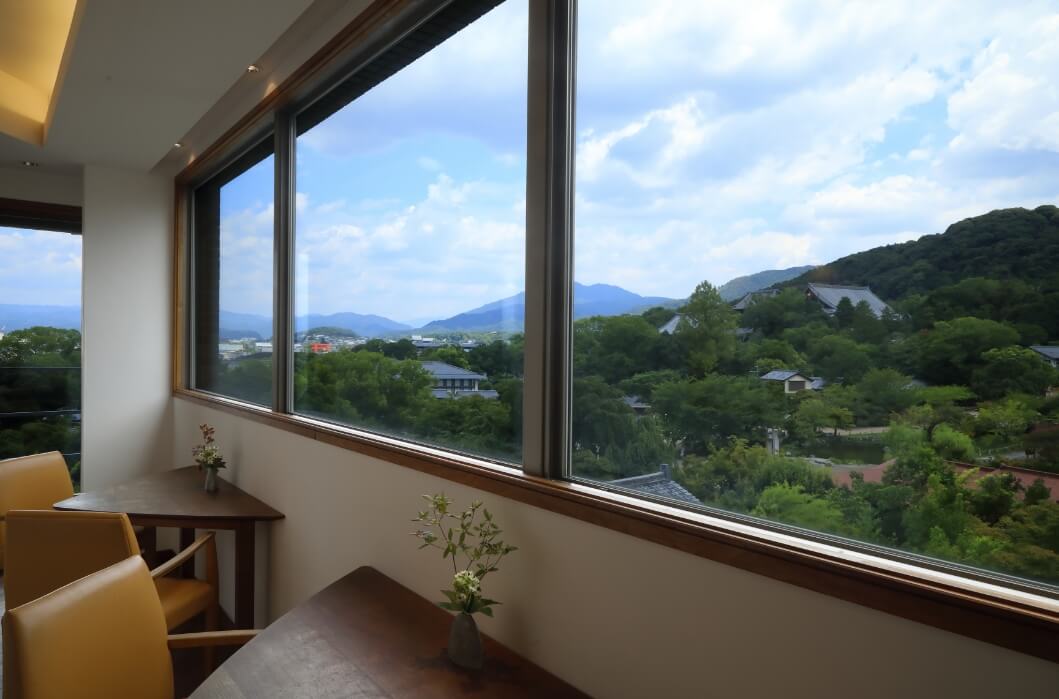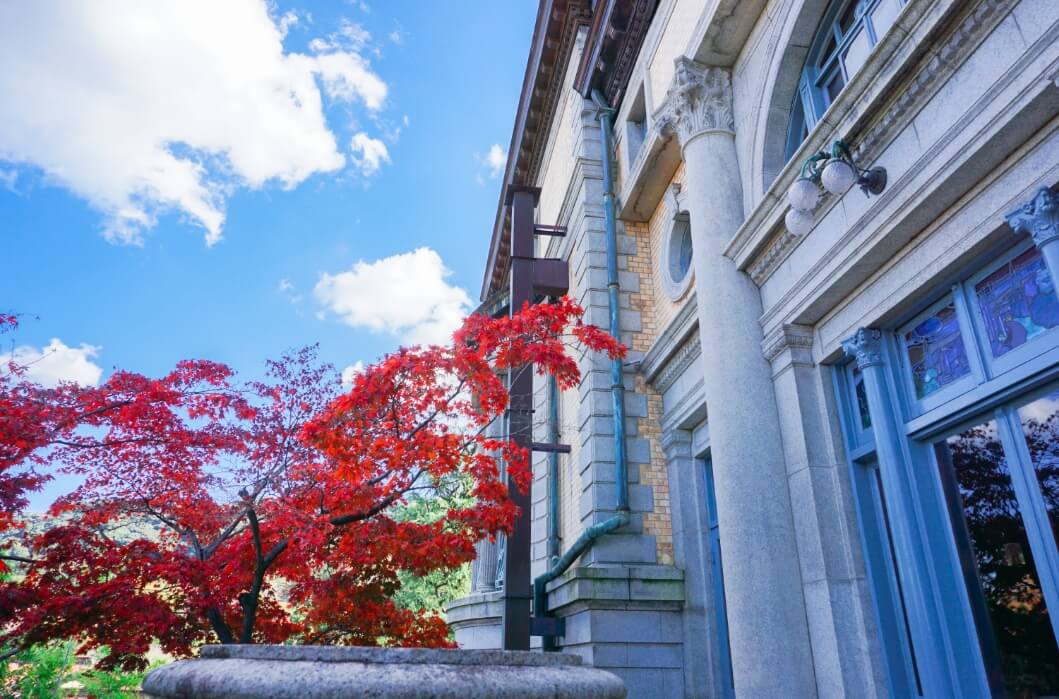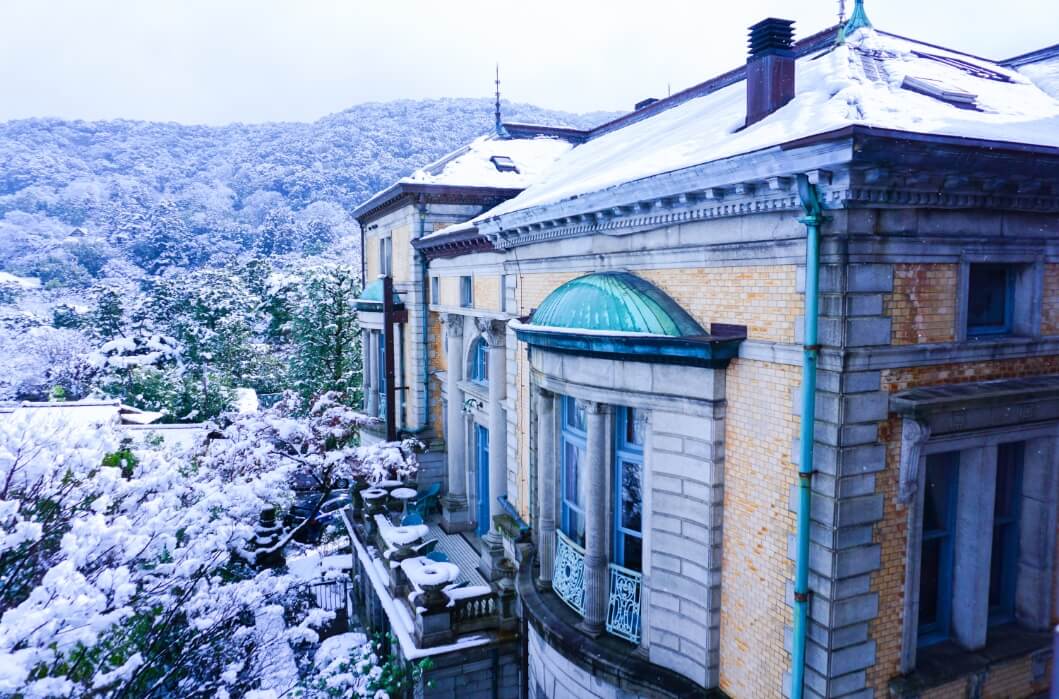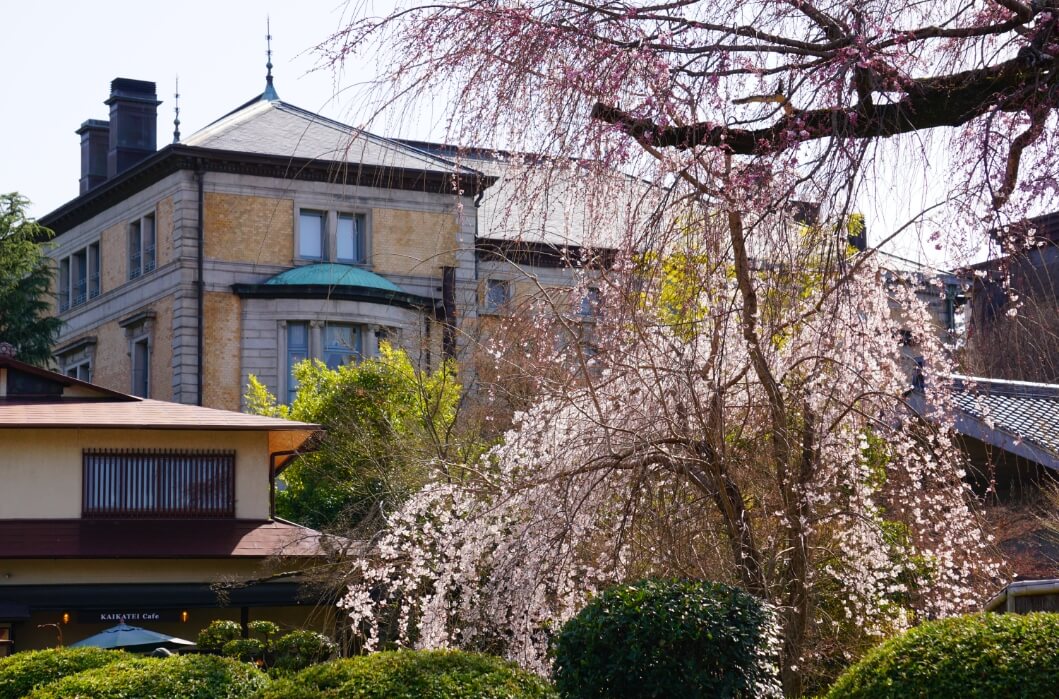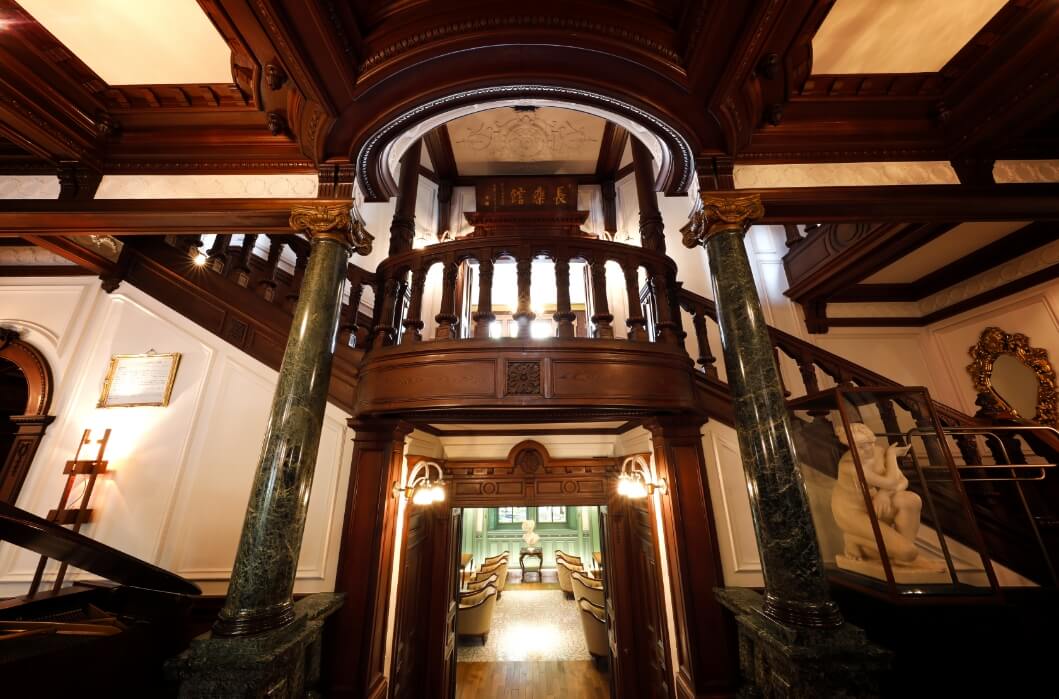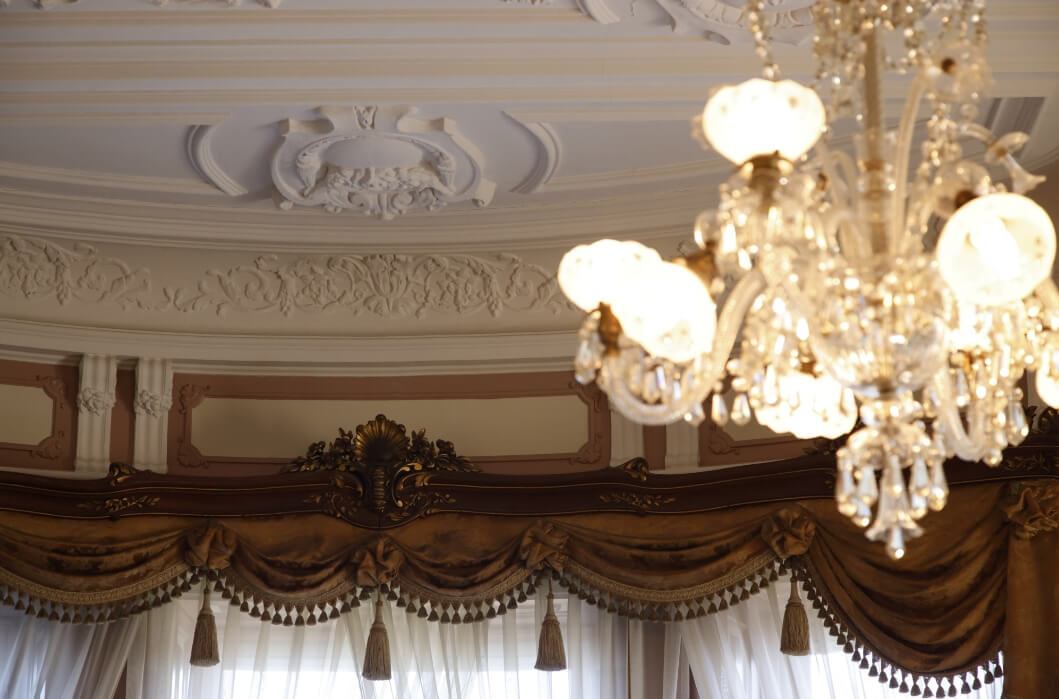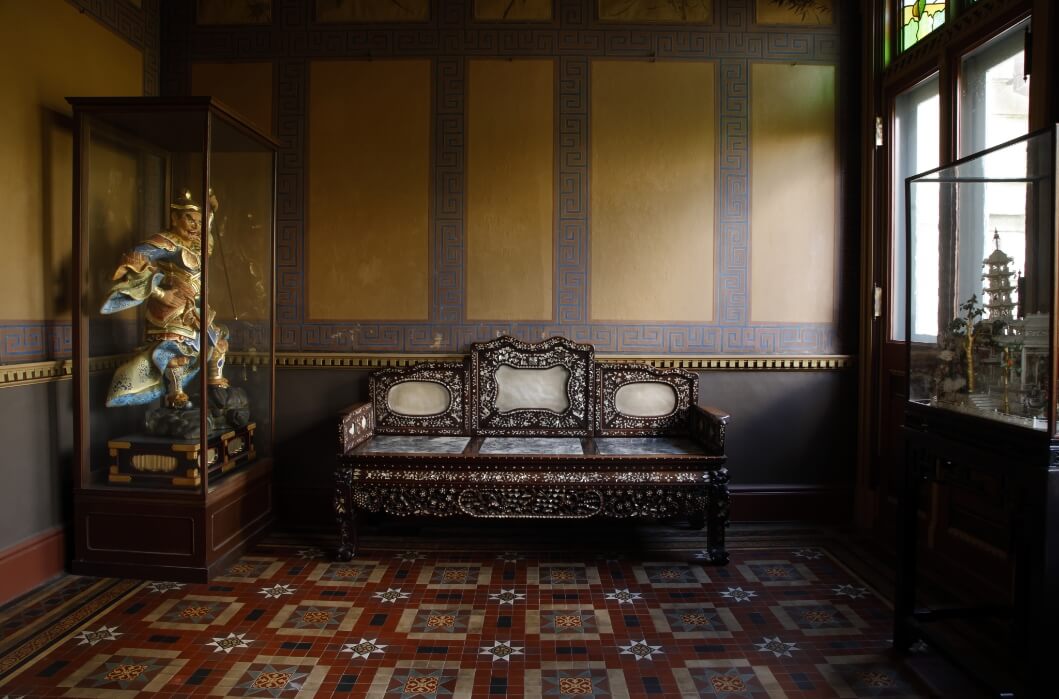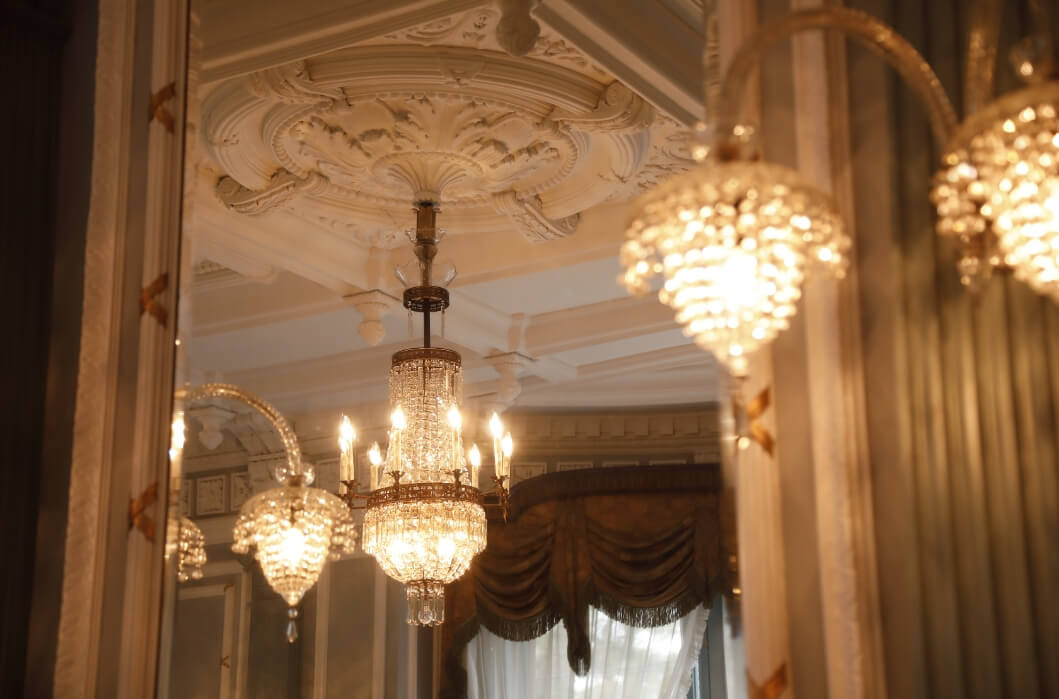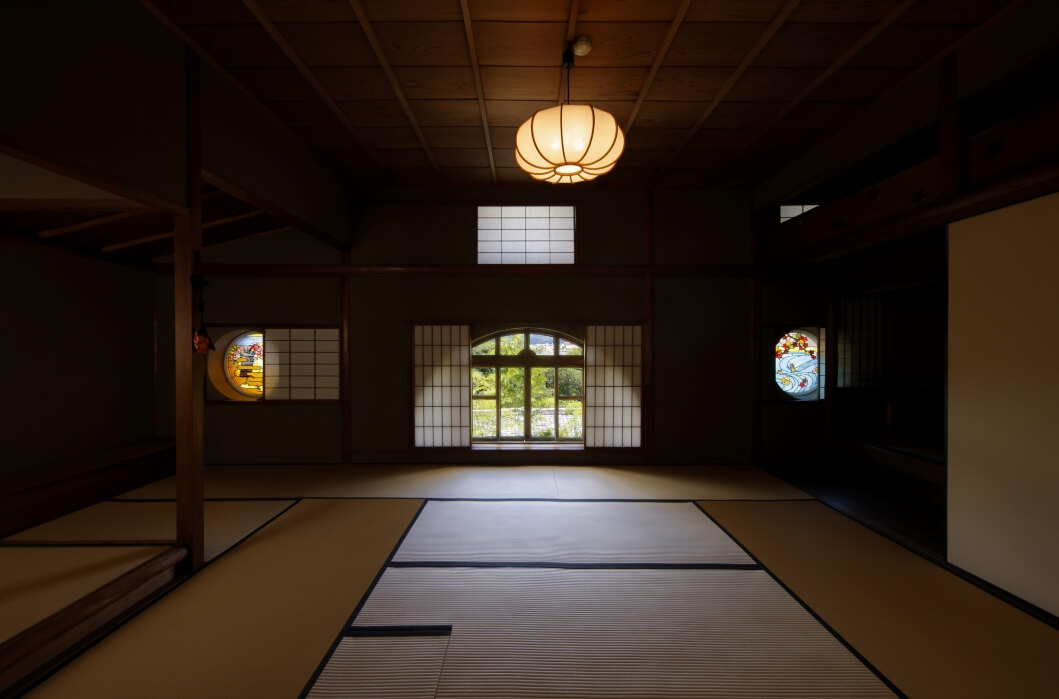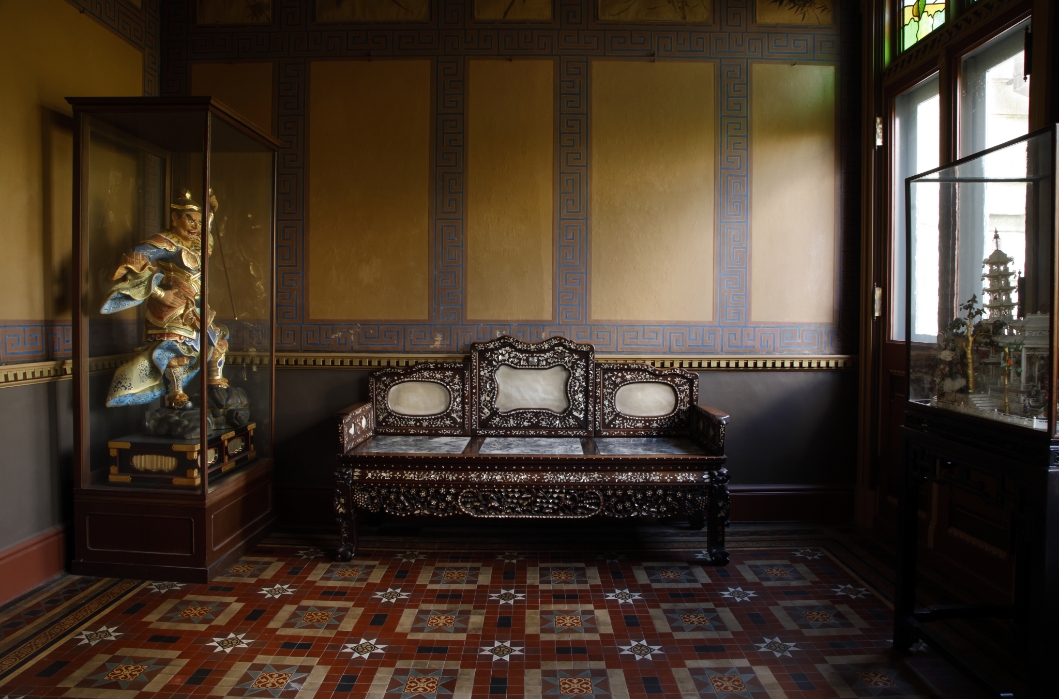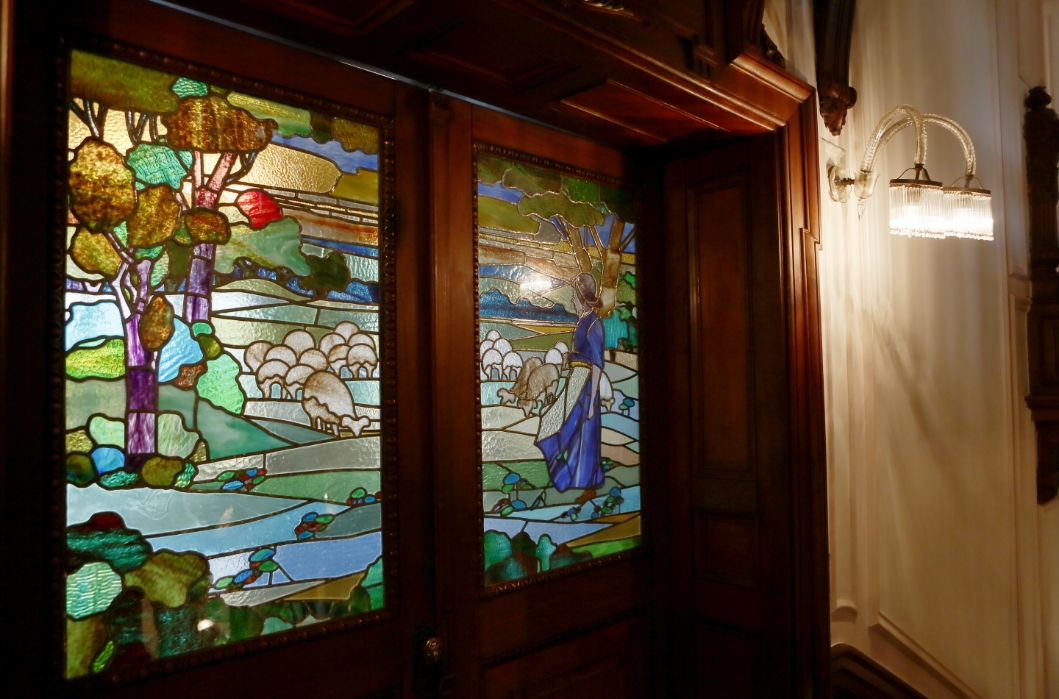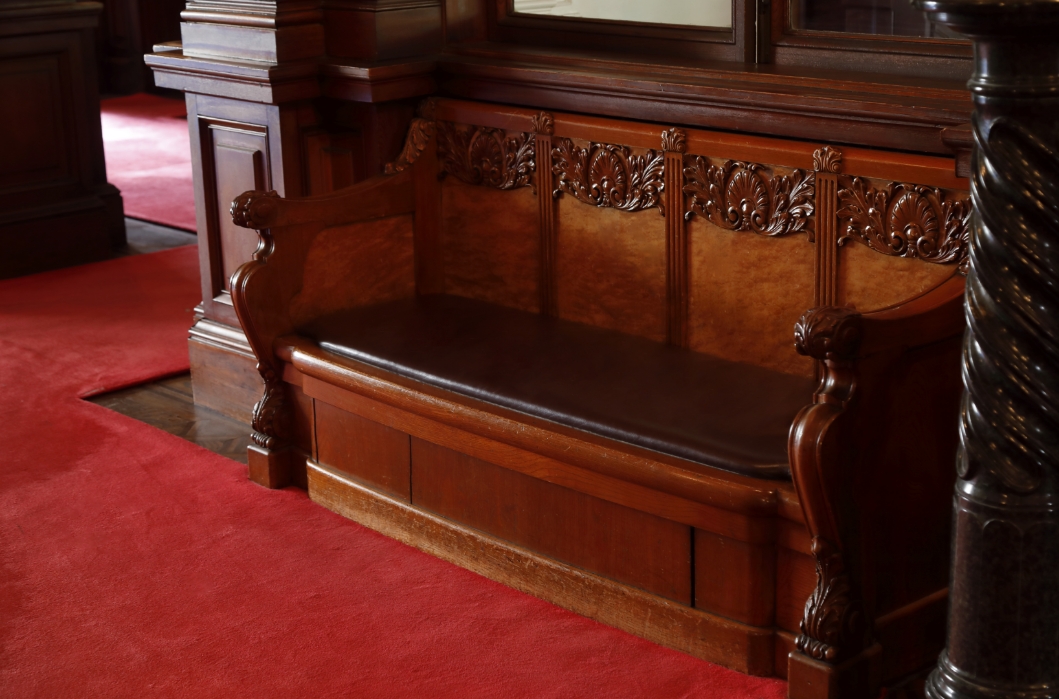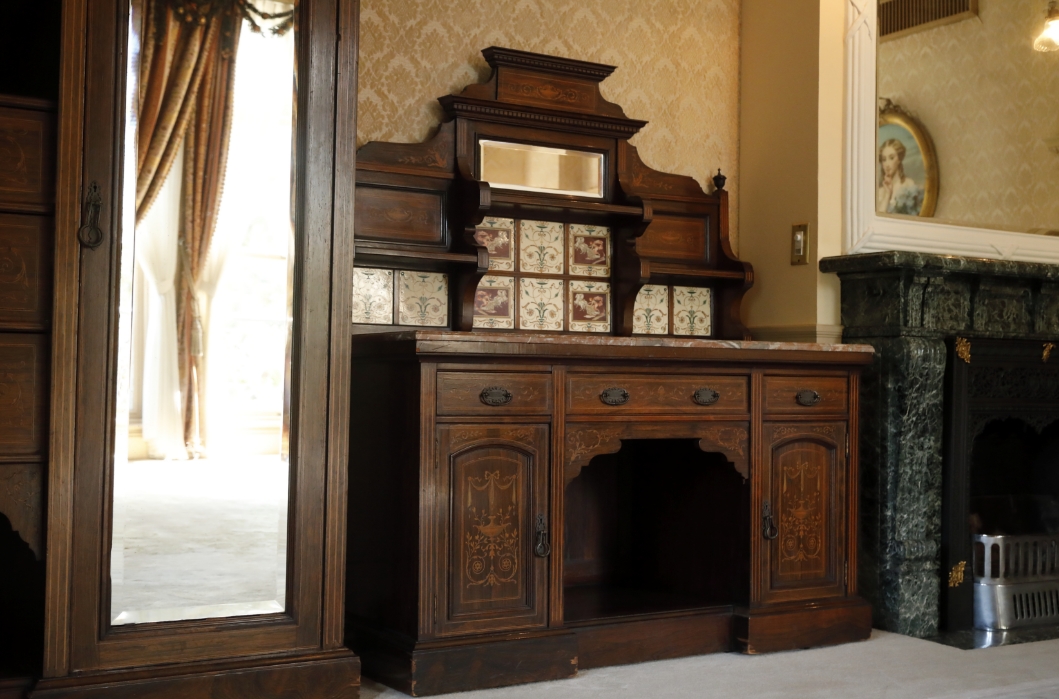Chourakukan
Guest House in Kyoto
The Chourakukan was built in 1909 by an entrepreneur Kichibei Murai, also known as the "Tobacco King,"
as a State Guest House for entertaining domestic and foreign guests.
It was built as a guest house.
Over a century has passed since then,and the Chourakukan has
welcomed countless visitors, including many prominent figures
who played key roles in Japan's modernization, such as the first Prime Minister of Japan、
Hirobumi Ito, Marquess Shigenobu Okuma, and Gensui Prince
Yamagata Aritomo.
In 1961, the building,
along with many of its furnishings and decorations,
was designated as a tangible cultural property by the city of Kyoto.
When guests enjoy tea or dine in the Chourakukan,
they may find themselves using tables and chairs
that are also designated as cultural properties.
Some of these chairs may even have been used by Prince Kinmochi Saionji, a member of the Imperial Family.
It may be a thing of the past.
The Chourakukan was established as a State Guest House for entertaining guests," and as it celebrates its 110th anniversary in June 2019,
we remain committed to offering our guests a "long-lasting enjoyment" consistent with the
meaning of its name.
STORY
After his tobacco business took off and he moved his main residence to Tokyo, businessman Kichibei Murai built Chourakukan in his birthplace of Kyoto as a guest house and social gathering place.
In addition to welcoming guests of Kichibei Murai, Chourakukan has also welcomed a variety of guests as a national lodging facility, weaving its history as a guest house. The following is a chronology of the history of Chourakukan as it has stepped forward into the era of Reiwa, passing through the Meiji, Taisho, Showa, and Heisei eras.
LOCATION
If you play in this house, you will enjoy it for a long time to come.
This Western-style house, named "Chourakukan" by the first Prime Minister, Hirobumi Ito, has a view of Mount Higashiyama and offers a close-up view of the changing seasons in Kyoto. Cherry blossoms in spring, fresh greenery in summer, autumn leaves in fall, and snow in winter. This is an extraordinary location where you can feel both the culture and the blessings of nature that have been preserved in this area.
ARTITECTURE
Architecture that brings together the best of the world's artistic styles
The designer of the pavilion, James MacDonald Gardiner, was a student of art history. He incorporated many artistic styles into the pavilion, transforming them without being typical, and infusing them with his own creativity.
(omitted)
These appear in the architectural style of the Chourakukan: the exterior is Renaissance, the reception room to the right is Rococo, the floor is Neoclassical, and the stained glass and windows are Art Nouveau.
In addition, there is a Chinese-style room with ink and water paintings of plum trees, chrysanthemums, orchids, and black and white monuments, and a Japanese-style shoin-style room on the third floor. The balconies that extend into the interior are boldly American in style.
It is a veritable treasure trove of artistic styles, with a mix of English, French, Chinese and Japanese influences."
Zenzaburo Fujii, "Ancestral Culture: Eternal Beauty
ANTIQUE
Furnishings of a bygone era that walked through history together
Some of the furnishings from the Meiji era still remain in the Chourakukan, and some are still in use. We will introduce some of the items that tell the history of Chourakukan, such as chandeliers imported from France in the Meiji era, furniture imported from England, and stained glass made in Japan.



